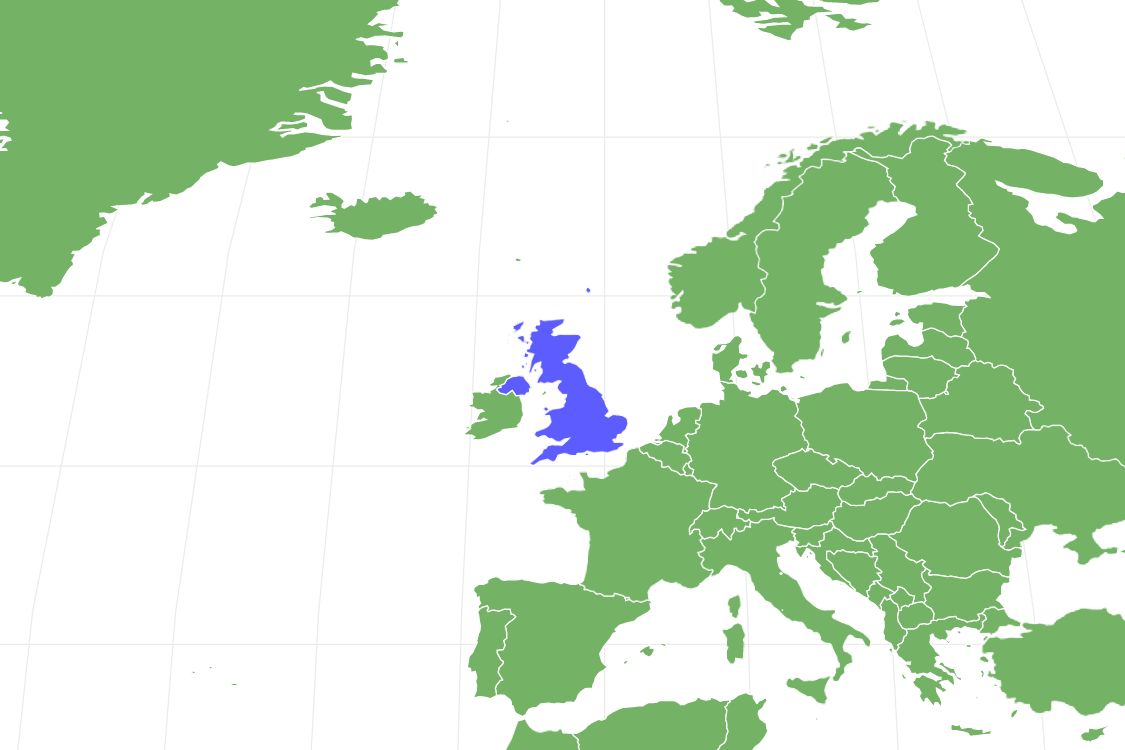Tamaskan
Canis lupus
Advertisement
Tamaskan Facts
- Common Name
- Tamaskan
Tamaskan as a Pet:
- General Health
- Energy Level
- Shedability
- Trainability
- Intelligence
- Tendency to Chew
- Size
- Family and kid friendliness
- Yappiness / Barking
- Low
- Separation Anxiety
- High
- Preferred Temperature
- Average climate
- Exercise Needs
- High
- Friendly With Other Dogs
- Group
- Pure bred cost to own
- $1,200 to $1,700 per puppy
- Dog group
- Working
- Male weight
- 66-90 lbs
- Female weight
- 50-84 lbs
This post may contain affiliate links to our partners like Chewy, Amazon, and others. Purchasing through these helps us further the A-Z Animals mission to educate about the world's species.
View all of the Tamaskan images!
While this breed may look like a wolf, Tamaskans are very tame and gentle with their owners.
A group of British breeders undertook a project in the 1980s to develop a new dog breed with a wolf-like appearance. The Tamaskan was one of the results of that effort, which combined German Shepherds, Siberian Huskies, Alaskan Malamutes, and Samoyeds to create new breeds.
These dogs are highly trainable and make excellent working dogs due to their intelligence and strength. They have also excelled at agility and other dog sports.
See all of our expert product reviews.
Tamaskans are not a good fit for first-time dog owners or owners that primarily like to unwind and relax with their dog on the couch over the weekend. Because of their high energy levels, these dogs need regular exercise and mentally challenging jobs or activities to truly thrive. Socialization at an early age, together with proper training, is important for your Tamaskan to be happy, healthy, and well-adjusted.
Tamaskans are loyal and sensitive dogs that respond best to positive reinforcement Harshly punishing this dog can have the opposite effect and result in more mischief from your dog. These dogs can suffer from high separation anxiety and may be best for active single people or families that want a daily companion.

Owning A Tamaskan: 3 Pros And Cons
| Pros! | Cons! |
|---|---|
| Great Companion for Kids: Tamaskans are very loyal and gentle dogs. They are a good choice for active families with kids who want a running or hiking companion. | Daily Exercise Requirements: Tamaskans, like their Husky and German Shepherd ancestors, are working dogs. They generally need 90 minutes of running, playing, or other forms of exercise every day. Without this physical activity, your dog may become bored and destructive in your house or yard. |
| Highly Intelligent: This breed is very smart and likes to have a job to do every day. Tamaskan dogs are great workers and have also done well with agility training and other sporting events. | House with a Yard: Some Tamaskans can weigh close to 100 pounds. Due to their large size and exercise needs, these dogs do best in a house with a large, fenced-in yard. They may struggle in an apartment or other confined spaces unless they can spend significant time outside burning off their energy. |
| Minimal Grooming: Other than its daily exercise needs, this dog is relatively low maintenance. It goes through heavy periods of shedding two times each year and may require periodic brushing during those times to remove dead hair. Weekly brushing throughout the rest of the year will keep your pup’s coat shiny. | Wary of Strangers: Tamaskan dogs become extremely attached to their families and can be wary of strangers. While they are friendly and are not an aggressive breed, they will need proper socialization with other dogs and people. Exposing your dog to different people and situations will help them be more accepting of people and animals that they do not know as they grow up. |
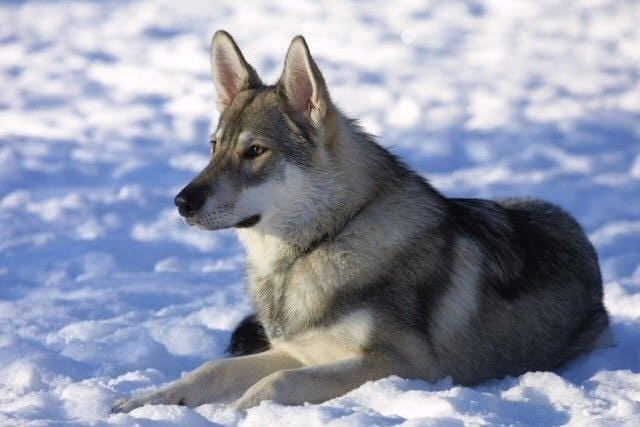
Tamaskan dogs are extremely attached to their families.
©Allison Laing / public domain – License
Size And Weight
Tamaskans are a large dog breed. Males are larger than females and typically weigh between 66 and 99 pounds and are between 25 and 28 inches tall. Females weigh between 50 and 84 pounds and are between 24 and 27 inches tall.
Health and Entertainment for your Tamaskan
See all of our expert product reviews.
| Male | Female | |
|---|---|---|
| Height | 25 inches to 28 inches | 24 inches to 27 inches |
| Weight | 66 pounds to 99 pounds | 50 pounds to 84 pounds |
Common Health Issues
Overall, the Tamaskan is a healthy breed. They were created using hearty breeds, so most don’t suffer from serious health concerns. However, because Tamaskans are still a relatively new breed, we don’t know everything about their health concerns. Below are a few conditions that Tamaskan may be more prone to.
Epilepsy is one of the most prevalent brain-related diseases that impact dogs. In fact, nearly 1% of the overall dog population suffers from this neurological condition. Much like humans, canine epilepsy involves seizures. Genetic defects, brain formation issues, and environmental conditions can all contribute to epilepsy in Tamaskan dogs.
Humans sometimes exhibit changes in behavior or other bodily changes before the onset of a seizure. Unfortunately, dogs do not exhibit symptoms that can reliably predict when a seizure is imminent. However, there are two different types of seizures that will impact the effects and courses of treatment for your dog.
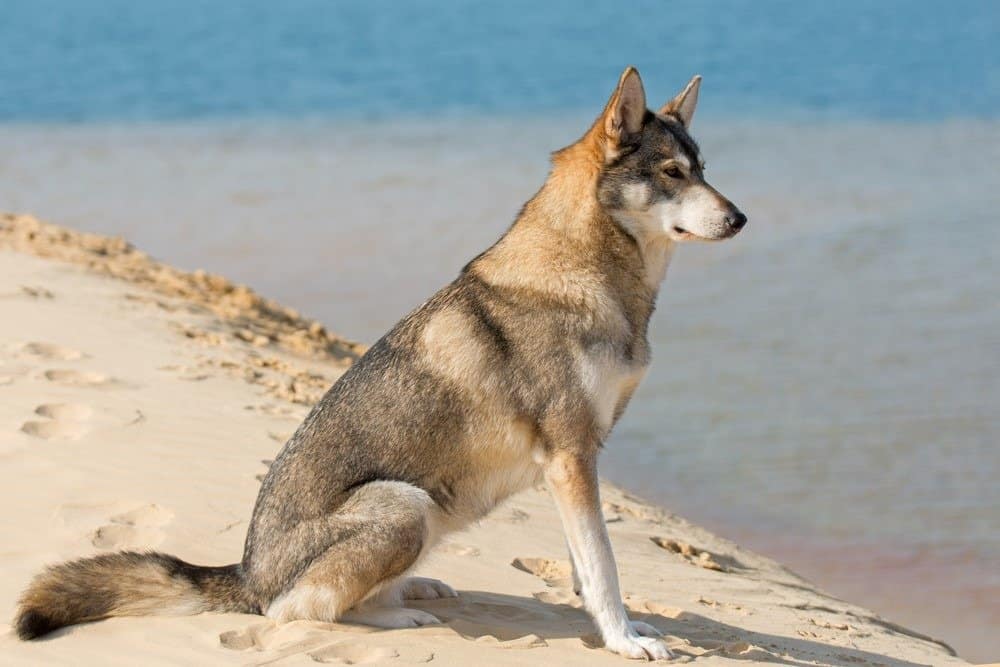
Hip Dysplasia is a common condition for large dogs but proper exercise and nutrition can aid in slowing the progression.
©Bildagentur Zoonar GmbH/Shutterstock.com
General seizures impact both sides of a dog’s brain and can involve tics or other unexpected muscular movements. Your dog may also drool, urinate or defecate during a general seizure. In contrast, a focal seizure affects only one side or one specific area of a dog’s body. These seizures commonly involve twitches or chewing movements in your dog’s face.
Hip Dysplasia is unfortunately a common condition for large- and giant-sized dogs. In a normal dog, its hip includes a ball and socket that slide smoothly back and forth while your pup walks. For dogs suffering from hip dysplasia, the ball and socket do not come together correctly. Instead of a smooth motion, the hip bones rub and grind together.
Over time, your dog’s hip will wear down and the joint can deteriorate completely. This condition is painful for your pet and will eventually lead to a loss of mobility in his or her legs. However, careful exercise and proper nutrition can help to slow the progression of this condition.
Tamaskan dogs, similar to their German Shepherd ancestors, can also suffer from Degenerative Myelopathy. This condition affects a dog’s back and spinal cord and causes a loss of function in its back legs. This disease generally only appears between ages 8 and 14 in most dogs.
However, it does get progressively worse over time. During the initial onset, dogs with this condition will appear to wobble or lose their balance while walking. As your pet continues to age, its hind legs will stop working and he or she will have to drag them behind him or her.
This degeneration occurs because your dog’s own immune system attacks and damages the fibers and nerves in the spine. Unfortunately, there is no cure or treatment for degenerative myopathy. Eventually, the immune system will harm the nerves that your dog needs to breathe and result in death.
To review, a few common health concerns for Tamaskans include:
• Hip dysplasia
• Epilepsy
• Degenerative myelopathy
Temperament And Behavior
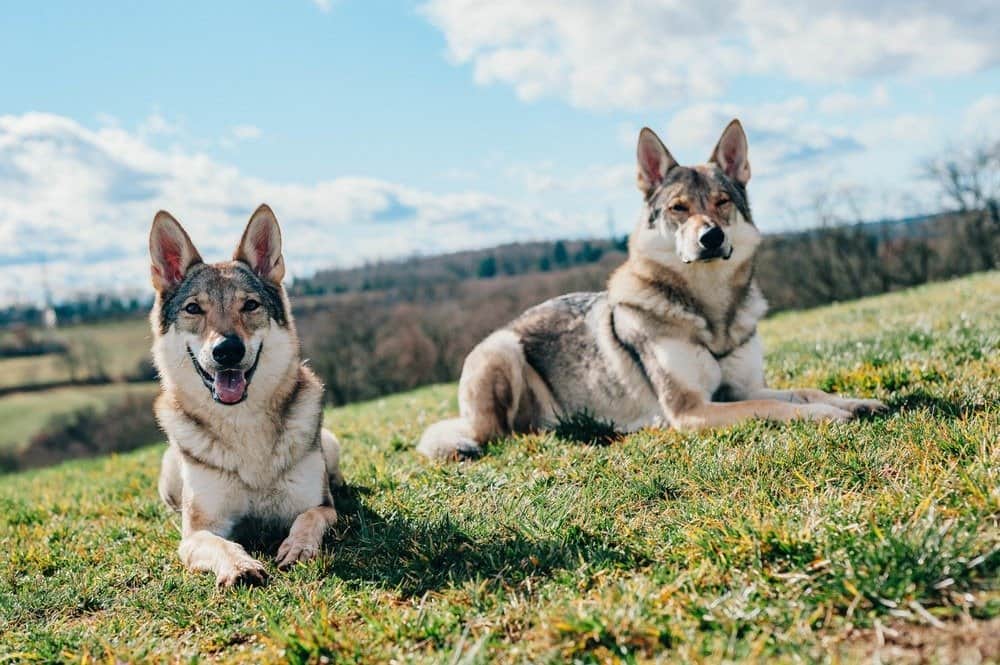
Tamaskans need to be kept busy or they can become destructive.
©Wirestock Creators/Shutterstock.com
Tamaskan dogs are intelligent, loyal, and devoted to their families. They are tolerant of children and love to romp and play outdoors for hours. These dogs can be wary of strangers if they are not socialized correctly from an early age.
Due to their intelligence and activity level, Tamaskans need to be kept busy. They can become bored and destructive in the house or in the yard if they do not have a job to do. These dogs do well with obedience trials, working group trials, agility training, and other athletic activities.
How To Take Care Of A Tamaskan
Your Tamaskan’s biggest need is for physical activity and companionship. They love long walks or challenging games of frisbee outside. Many vets recommend 90 minutes or more of physical activity per day for this breed.
This breed would make an excellent hiking companion. They love to be with their owners as much as possible. They can get separation anxiety if they are left alone for more than a few hours at a time.
The Best Dog Food For Tamaskans
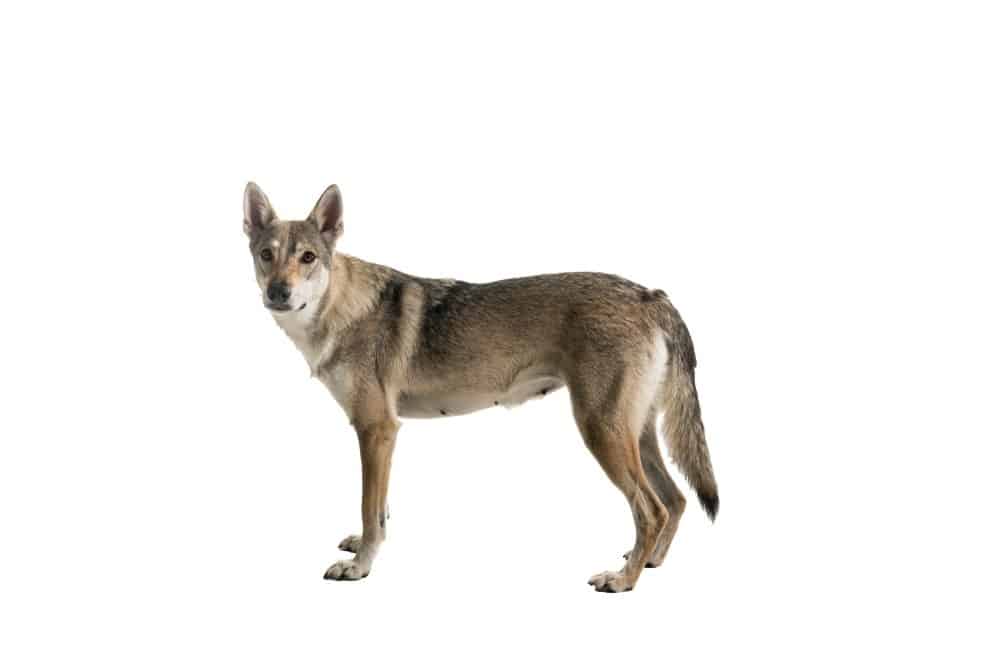
Nutrition is essential to prevent conditions like hip dysplasia.
©Leoniek van der Vliet/Shutterstock.com
These dogs are generally content eating most diets if they are balanced properly. Tamaskans are happy eating kibble, wet, or canned food. They will also eat raw food if you prefer a more natural approach.
Some Tamaskans have more dominant wolf genes than others. These dogs may do better with a raw diet.
Adequate nutrition is essential to help prevent hip dysplasia in Tamaskans as a large breed. Dog foods for large breeds often contain glucosamine and chondroitin as joint supplements.
Therefore, Instinct Freeze Dried Raw Boost Mixers Mobility Support Dog Food Topper is A-Z Animals’ Tamaskan food recommendation.
This mobility support food’s ingredients include chicken and ground chicken bone, which provides the essential Glucosamine and Chondroitin to keep your Tamaskan happy, healthy, and active.
The Instinct Raw Boost Mixers product is available on Chewy or Amazon.
- Freeze dried grain free dog food toppers
- Contains cage free chicken
- Contains flaxseed, New Zealand green mussel, turmeric, & fenugreek for mobility support
- No grain, potato, corn, wheat, soy, artificial colors or preservatives
Tamaskan puppies should eat multiple smaller meals each day until they are about 8 weeks old. Puppies between 8 and 5 months, should eat three times each day. After the puppy is 5 months old, you should be able to switch to feeding them twice a day.
Maintenance And Grooming
Tamaskan dogs are surprisingly low maintenance as far as grooming goes. They have thick fur, but it sheds only twice per year. You will want to brush your dog three to four times per week during those peak shedding periods. However, a weekly brushing to remove dirt, debris, and dead hair is enough for the rest of the year when your dog won’t be shedding very much.
The Tamaskan coat also has natural oils that help to bead water and keep your pup clean throughout the year. As a result, you should only bathe your dog when he or she gets muddy or overly dirty from playing outside. More frequent baths will remove your pet’s natural oils and damage his or her coat.
If you can provide 60 to 90 minutes of outdoor exercise each day, then your Tamaskan should naturally wear down his or her nails. Nail clipping should be minimal in those instances. However, you may have to cut its claws if your pup gets less physical activity or primarily runs on grass or other soft surfaces.
Training

Tamaskans respond best to positive reinforcement.
©simontop/Shutterstock.com
As noted above, Tamaskans are known for their intelligence. They love to learn and find obedience training to be extremely mentally stimulating. They have also been known to excel at agility events, working group trials, and other similar challenges.
Please keep in mind that these dogs aim to please and have a gentle temperament. They will respond best to an experienced dog owner who uses positive reinforcement techniques rather than stern punishment. Yelling at or punishing this dog too harshly can have the opposite effect and cause them to act out and be destructive.
Tamaskans can become stubborn if not trained properly as puppies. Their high energy can also make them difficult to handle as they get older if they do not know what the rules are. It is important to be firm but caring with this breed.
Exercise
Before adding a Tamaskan to your family, you must understand that this breed descends from the Husky, Alaskan Malamute, and Samoyed. Humans have used those breeds as sled dogs for hundreds of years. Their other ancestor, the German Shepherd Dog, is a world-renowned police, military and service dog.
In other words, you should expect that your Tamaskan will need a long walk or jog each day to remain happy and healthy. Other outdoor activities, such as obstacle courses and frisbee tosses can be a great way for you and your pup to bond while also burning off some excess energy. Most vets recommend that his breed get up to 90 minutes of physical activity and mental stimulation per day.
Puppies
Tamaskan dogs often have large litters of puppies. In fact, it is not uncommon for each litter to contain between six and ten puppies. These pups typically come in one of three colors including 1) wolf, or light, gray; 2) red gray, and 3) black gray.
These dogs also normally have different designs on their faces, known as their masks. Some puppies have what is known as a minimal mask, which has more white fur around the cheeks, snout, and eye areas. The middle mask has solid coloring around the head, eyes, and nose with only a little white on the cheeks and around the mouth.
Lastly, a full mask has only a small amount of white around the cheeks. In all three cases, the face coloring should go all the way down to the nose.
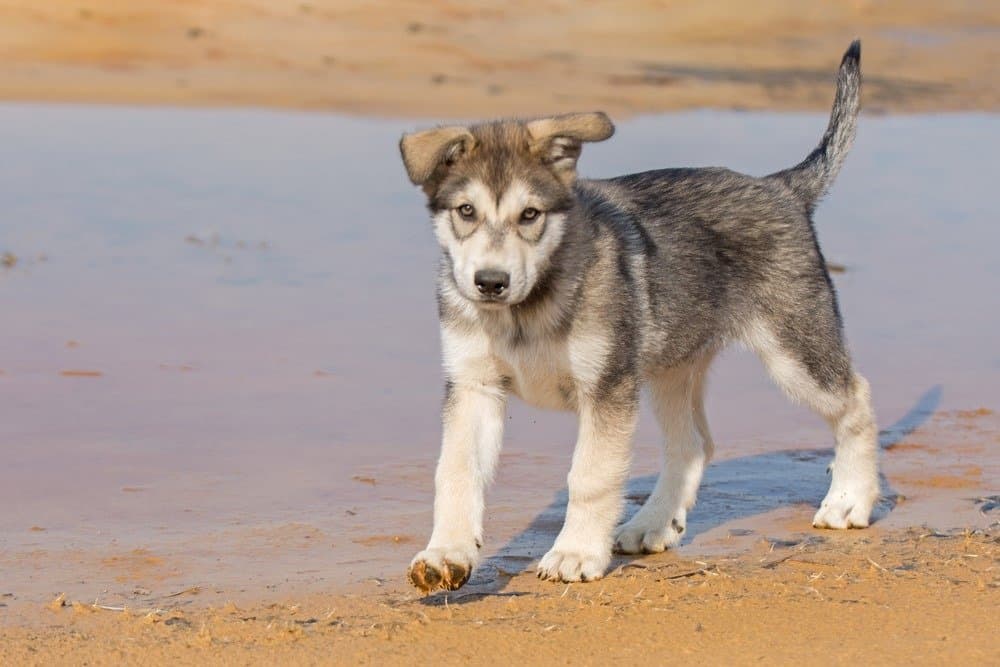
Tamaskan puppies usually come from large litters.
©Bildagentur Zoonar GmbH/Shutterstock.com
Tamaskans And Children
This breed is an excellent choice for families with children. They are extremely loyal and become attached to their packs. Tamaskans are also gentle and patient with kids and can make good play companions.
As with any dog, it is important to teach your kids how to behave around them. You should closely supervise young children around all dogs until you are sure that they know how to gently pet and interact with your Tamaskan.
Dogs similar To Tamaskans
Tamaskans are closely related to large North American sledding and working dog breeds including Alaskan Malamutes, German Shepherd Dogs, and Siberian Huskies.
- Alaskan Malamute: The Inuit people initially created the Alaskan Malamute as a sled and working dog. Like their Tamaskan cousins, these dogs are also highly intelligent, energetic, and loyal. Malamutes are also large dogs and can weigh between 75 and 100 pounds and reach heights between 23 and 25 inches tall.
- German Shepherd Dogs: British breeders initially utilized German Shepherds as part of the breeding stock to create the Tamaskan breed because of their intelligence, loyalty, and strong working ability. These large dogs can reach up to 95 pounds and stand between 22 and 26 inches tall at the shoulder. They are excellent guard dogs and have also found a home as police and military dogs.
- Siberian Husky: This breed is smaller than the Tamaskan dog. Siberian Huskies weigh between 35 and 60 pounds and reach shoulder heights between 20 and 24 inches. These dogs have a thick coat that allows them to survive in temperatures below zero degrees Fahrenheit. These are well-known sledding dogs and have been able to work in even the coldest environments.
Famous Tamaskans
For a relatively young breed, the Tamaskan dog has had several famous roles on television and in the theater. Because of their wolf-like appearance, Game of Thrones used Tamaskan dogs to portray dire wolves throughout the series. A Tamaskan dog also played the role of a wolf on a recent Broadway production of The Crucible.
Popular Names For Tamaskan
Despite their fierce look, which closely resembles a wolf, many people give Tamaskans simple names. The most common names for this breed include:
• Toby
• Jack
• Buddy
• Lucy
• Coco
• Abbie
• Leo
• Lulu
• Oliver
Tamaskan FAQs (Frequently Asked Questions)
How much does a Tamaskan cost to own?
Tamaskans are a new breed and quality breeders will charge a premium for one of their pups. These dogs will cost between $1,200 and $1,700 on average, but some breeders are charging $2,000 or more. Due to the breed’s rarity, you may not be able to find a quality puppy in North America.
While it is possible to buy a pup from an international breeder, the cost to transport your pup home may be substantial. Airfare to fly your new family member home could be as much as another $2,000 depending upon where the breeder is located.
You should expect to pay between $500 and $1,000 per year for veterinary care, food, and other necessities. It can also cost you $200 or more to spay or neuter your pet.
How long do Tamaskans live?
Tamaskans are a rather long-lived breed, especially for their size. They generally live between 12 and 15 years or more.
What is a Tamaskan?
A Tamaskan is a dog with a wolf-like appearance. They were bred from Siberian Huskies, Alaskan Malamutes, German Shepherds, and Samoyeds. Tamaskans make good working dogs and they are very gentle and loving with their family members.
How much exercise do Tamaskans need?
Tamaskans are active dogs who were bred to work. They will need up to 90 minutes of exercise each day.
Are Tamaskans easy to train?
Yes, Tamaskans are relatively easy to train. They are intelligent and very eager to please their owners.
Are Tamaskans good family dogs?
Yes! These dogs make an excellent addition to families with kids. Tamaskans are very patient, loyal, and devoted companions for kids. They are generally friendly but will be wary and protective of their pack when strangers are around.
Are Tamaskans herbivores, carnivores, or omnivores?
Tamaskans are Omnivores, meaning they eat both plants and other animals.
What Kingdom do Tamaskans belong to?
Tamaskans belong to the Kingdom Animalia.
What is the scientific name for the Tamaskan?
The scientific name for the Tamaskan is Canis lupus.
Thank you for reading! Have some feedback for us? Contact the AZ Animals editorial team.
Sources
- Dog Breed Info, Available here: https://www.dogbreedinfo.com/t/tamaskandog.htm
- Pet Guide, Available here: https://www.petguide.com/breeds/dog/tamaskan/
- All Things Dog, Available here: https://www.allthingsdogs.com/tamaskan-dog/
- Plat Pets, Available here: http://platpets.com/tamaskan-dog-breed-temperament-training-and-diet/

